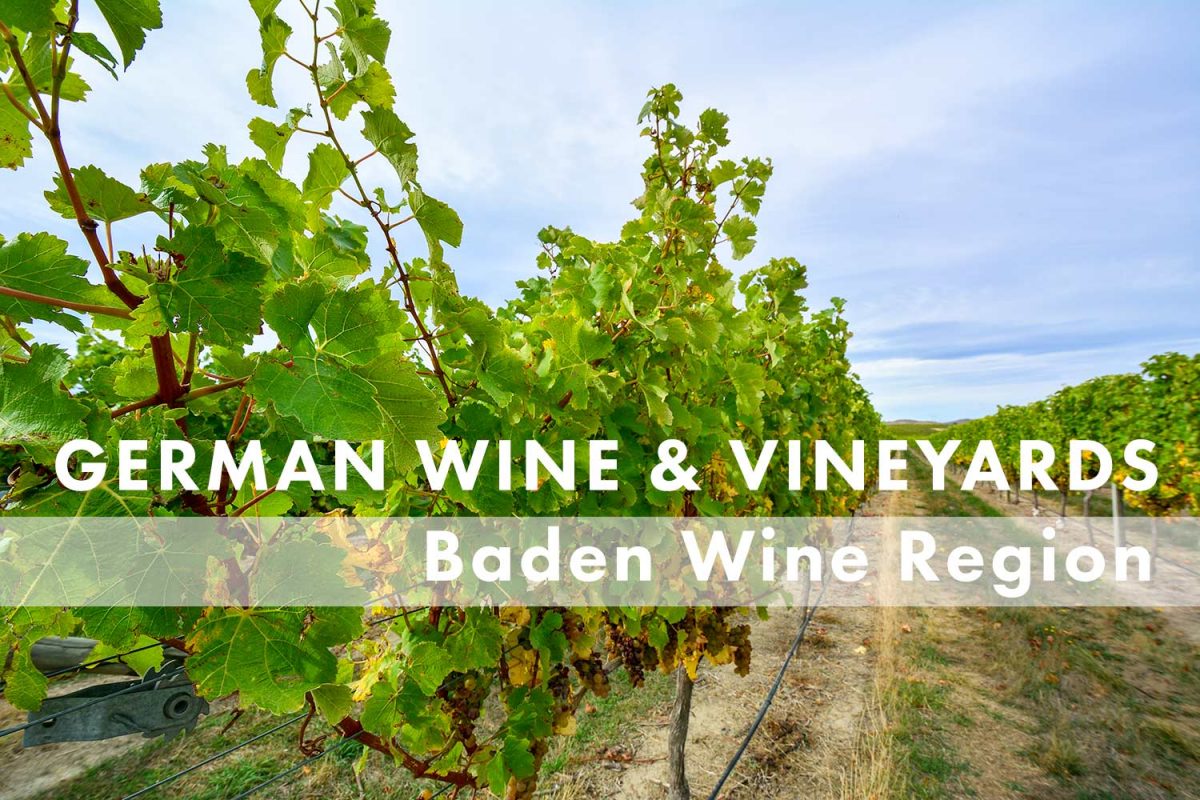<<– back to overview: German Wine and Vineyards

The sun-blessed vineyards of Baden
Baden Wine Route
Geographic Location: Southwest Germany.
The Baden Wine Route is incredibly diverse.
The Baden wine region stretches like a green ribbon for more than 400 kilometres from the River Tauber in the north to Lake Constance in the south.
With above-average temperatures for Germany, Baden has a similar climate to regions such as Alsace, Savoy and the Loire. On the southern slopes of the Kaiserstuhl, near Achkarren and Ihringen, you‘ll find Germany‘s warmest point.
Baden-Württemberg‘s wine-making areas include Kaiserstuhl, Breisgau, Tuniberg, the Badensian „Bergstrasse“ region, Kraichgau, Ortenau, Markgräferland, Lake Constance and Tauberfranken. In Baden, wine can only be grown on the hillsides – and steep hillside vineyards are not easy to work.
Growing vines here therefore requires more painstaking work – often by hand – and a great deal of tender loving care. But the wine-growers, and the connoisseurs, are rewarded with wonderful wines. These conditions are responsible for the distinctive flavour and character of the wines. The grapes retain a high level of fruit acidity, and the wines develop a fine bouquet and aroma.
The most frequently grown grape variety is Gutedel, a dry, mild wine that is best enjoyed young, ideally within two years. Outside of the region, it is also known as „Markgräfler“ wine. It has a very delicate bouquet, sometimes described as having a hint of nut. An ideal tipple wine, it is undemanding, highly palatable and suitable for a variety of occasions.
German wine: the Württemberg Trollinger
The trollinger, also known as the blue trollinger, is a delicious red wine. The name probably originates from the word tirolinger, a reference to South Tyrol where the original vernatsch grape was grown (not to be confused with vernaccia, another Italian grape).
South Tyrol and Württemberg are virtually the only places where trollinger grapes are cultivated to make wine, although they are eaten all over the world under the name Black Hamburg. It was the Romans who brought the Trollinger to the Rhine, where it spread out into the Neckar valley and the Kraichgau and Baden regions. Trollinger is the most common variety in the Württemberg wine growing region.
Good Trollinger wines are ruby red in color with a fresh, fruity palate and are usually ready to drink within only a year of harvest. They are rarely produced as quality-certified wines and the bulk are blended with Lemberger wines. Weissherbst rosés are made by lightly pressing the red grapes to produce a pale, salmon-pink color.
Trollinger is the quintessential Swabian wine and a fine example of the wine-growing tradition in the Württemberg region. Every year since 2001, a Trollinger marathon has been held in its honor in Heilbronn.
In many places, the grape harvest is celebrated with huge wine festivals that take place from April until late autumn.
People come from near and far to enjoy the friendly atmosphere and sample the new wines of the season, a tradition that has been practiced for generations.
Map Baden-Württemberg
External Resources
Baden-Württemberg Tourism: www.tourism-bw.com

